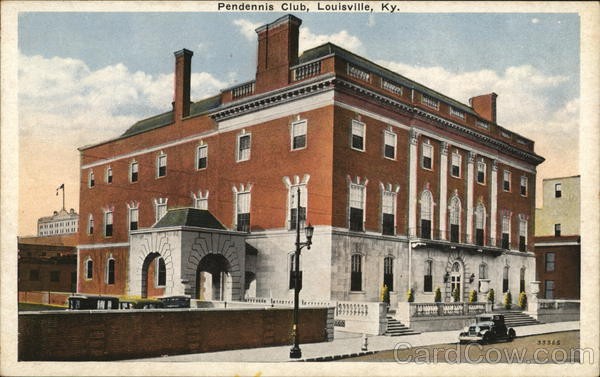The Pendennis Club
Introduction
Text-to-speech Audio
Images

Backstory and Context
Text-to-speech Audio
The history of the Pendennis Club is rather interesting. While it has always been a social organization, it first started out as a gentleman’s club. This club was particularly strict with its members or rather, the select members it allowed in. This elite private club excluded prospects such as African Americans, people of the Jewish faith, as well as females. The club remained this way well after the majority of most businesses desegregated in the 1960s.
One man in particular, Louis Coleman Jr., was denied membership into the Pendennis Club because of his race. He then filed a complaint in 1991with the Kentucky Human Rights Commission. Following this complaint, Louis teamed up with Jan Phillips and Richard Beal and protested by staging a lunch on the sidewalk in front of the building. These three advocates believed it was the best way to achieve desegregation for the club. Their unique style of protesting was repeated throughout the 1990s. Because of his protests on the club along with other civil rights issues at this time, Coleman Jr. is one of Kentucky’s most recognized civil rights activists. The members of the club countered this complaint and said that they were entitled to privacy as well as free association under the Constitution to allow in whomever they please. The Pendennis Club did not fully open its doors to members of race, gender, and religion until the year 2006. Following desegregation, several members of the club said that many African Americans still refuse to belong to that particular environment given its history on racism. Though the club eventually opened its doors to a wider variety of people, it is still remarkable that the Pendennis Club managed to continue to discriminate on the basis of race, illegally, forty years after the Civil Rights Movement.
Let’s fast forward to the
Pendennis Club today. Today, the club persists because it is open to anyone no
matter his or her race, religion, or gender. No one has a right to be a member.
Nor does heredity play into becoming a member. As for what goes on inside,
there is a variety of things for its members to take part in. There is squash,
fitness, banquets, as well as food and drinks available. While it started out
with a tortured past, the club applauds itself at being a place where one can
relax and enjoy his or her time there, presenting itself as a place of
civility, decency, and social graces. The Pendennis Club has tried to
reform by looking to the future with open arms towards who is
allowed in as members.
Sources
1. The Pendennis Club website (http://pendennisclub.org/)
2. The Courier Journal
